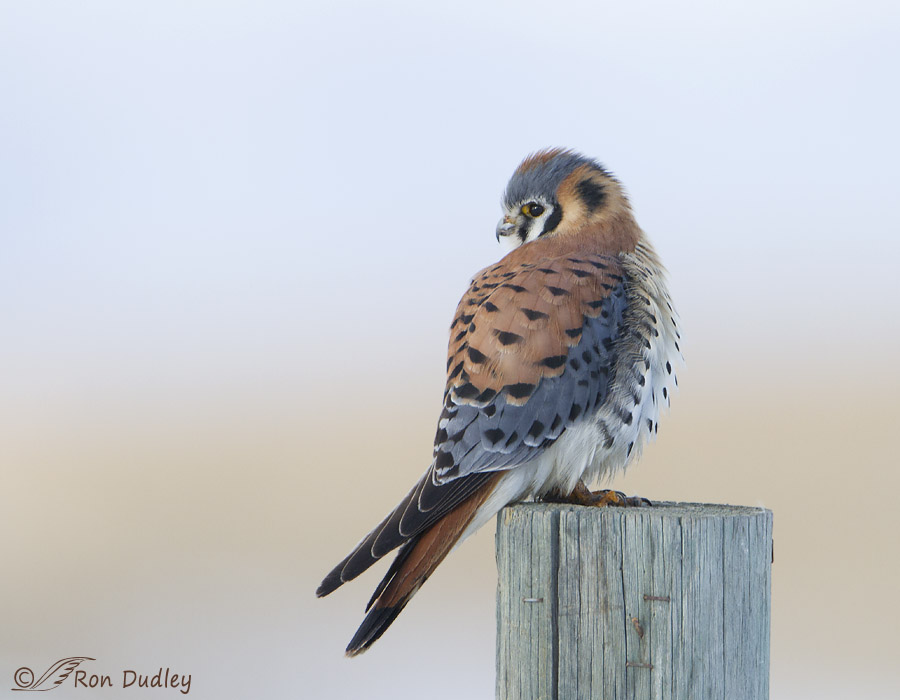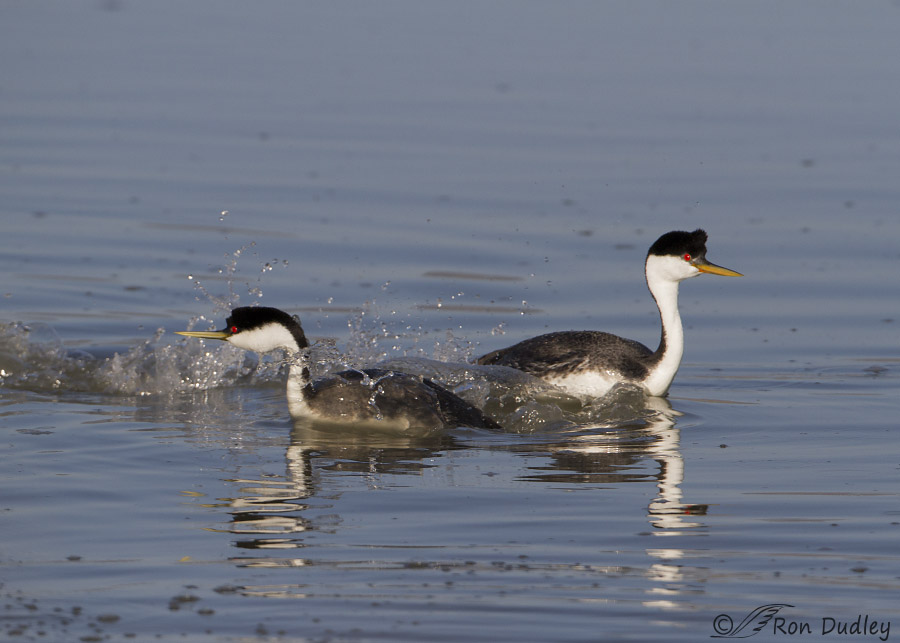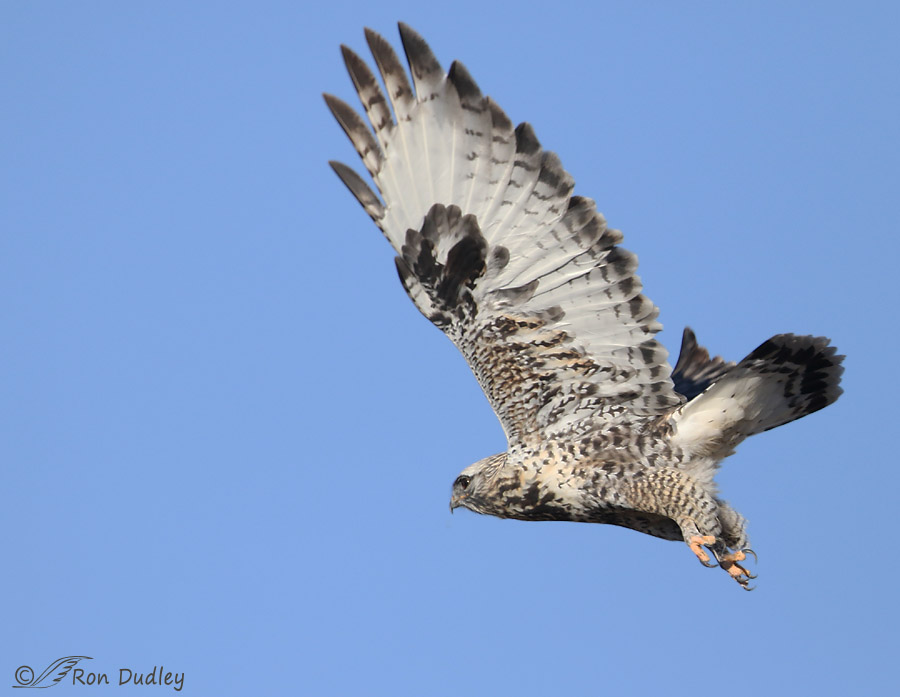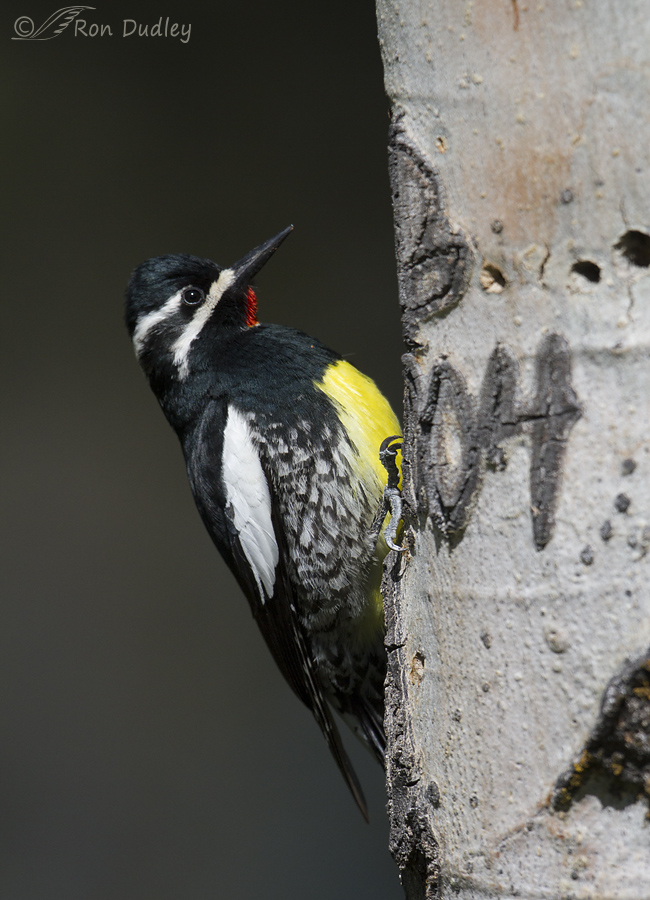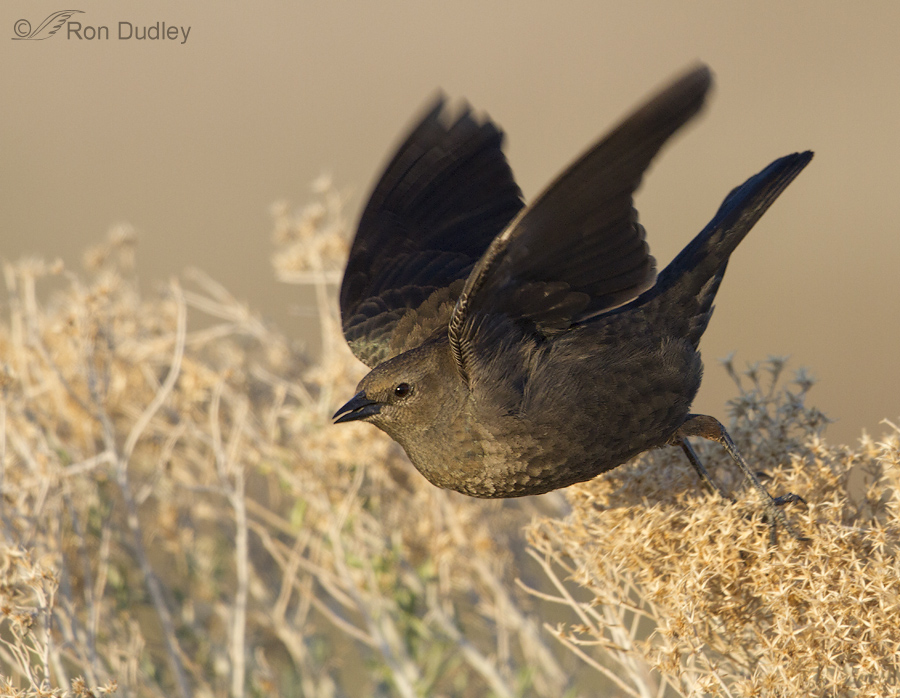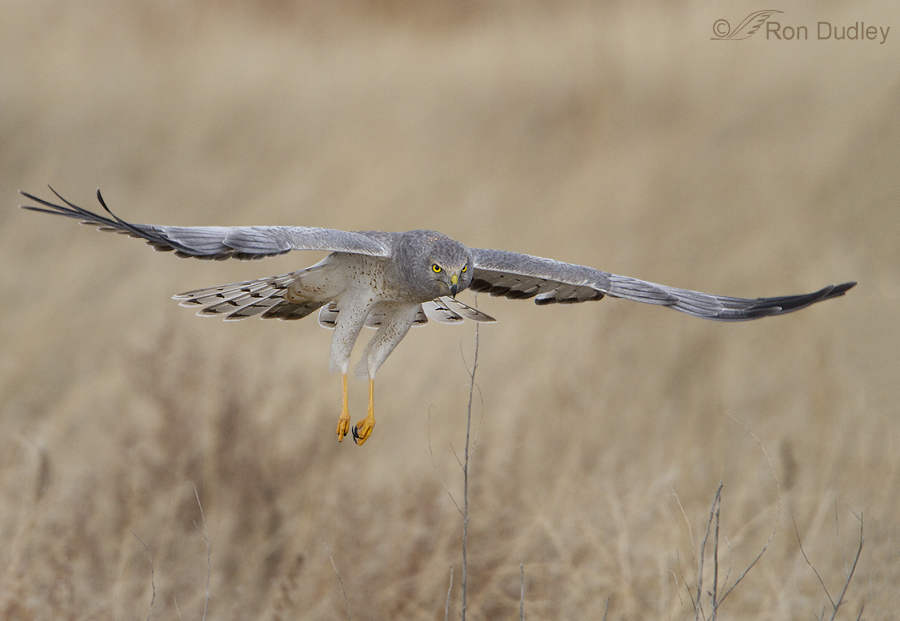Tag: sexual dimorphism
An Aggressive Western Grebe (and a difference in water-running style among grebe species)
My FOY Rough-legged Hawk And A Rookie Mistake In Setting Up A New Camera
Williamson’s Sapsuckers And The Glory Hole Aspen
Brewer’s Blackbirds – Male And Female
Male Northern Harrier Hunting
Red-tailed Hawks – Creatures Of Habit
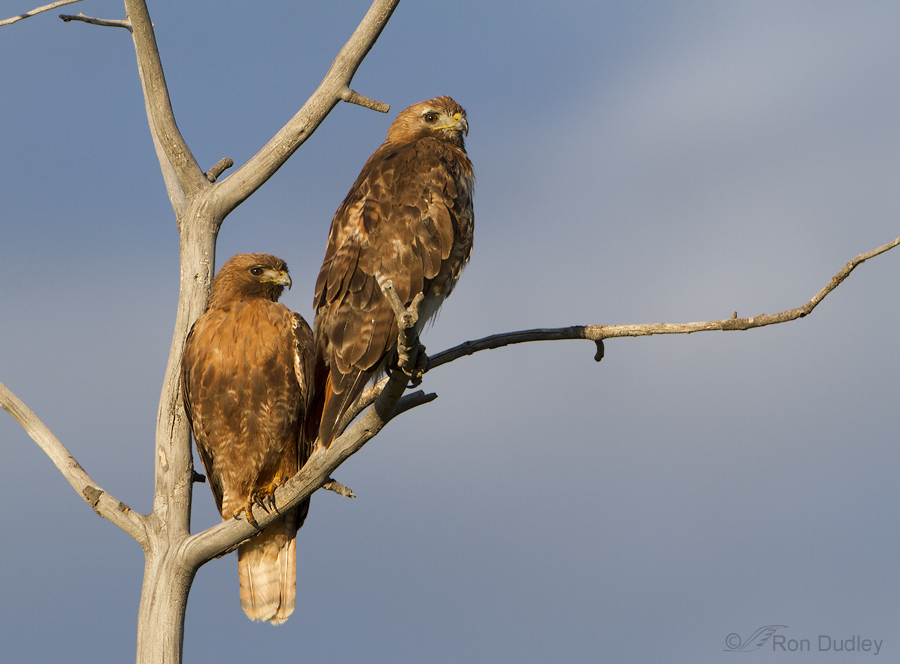
Last summer (these first two photos were taken July 22, 2012) I photographed this mated pair of Red-tailed Hawks in western Montana. On most mornings and some evenings I could almost count on finding them perched in the same old snag and even on the same branch of the dead tree.
Earlier this month on my first Montana camping trip I found the same mated pair on the same perch (male at bottom, female up top).
Gray Partridges In Northwest Montana
The Gray Partridge has a fairly limited range in North America and most folks don’t get to see them so I thought some of my readers might be interested in a post on the species. This bird prefers the grasslands and grainfields of our northern wheat-belt so they’re fairly common on our family farm in northwest Montana.
Gray Partridges are often called Hungarian Partridges, or “Huns” for short.
Male Northern Harrier – The Gray Ghost
One of my favorite subjects is the male Northern Harrier. Because juveniles of both sexes are similar to the adult female, to the untrained eye most harriers look like females which is one of the reasons that many folks believe that they rarely see males – thus the name “Gray Ghost” for the ”elusive” adult male.
Western Grebe Fish Delivery
Temperatures are finally warming a bit here in northern Utah but the world is outside is still monotonously white. Yesterday morning I measured 22 1/2″ of snow on the north end of Antelope Island, indicating that our bleak and largely featureless landscape will remain the same for the foreseeable future. So this morning I needed a break and decided to post an image (taken this past June at Bear River MBR) that would remind me that spring is somewhere out there on the distant horizon. 1/3200, f/7.1, ISO 640, 500 f/4, 1.4 tc, natural light Western Grebes are devoted parents to their incessantly hungry and noisy chicks. The male and female take turns with their parental duties – one will back brood the youngsters while the other delivers fish and then they alternate responsibilities. Here the female (smaller than the male, with a shorter, thinner bill – thus sexual dimorphism) has caught a small fish and is delivering it to the male. Usually the parent receiving the fish will give it to the chick, as happened here. As I’m sure is obvious, I’m very much looking forward to watching and photographing springtime bird activities once again. It’s going to be a very long 2-3 months… Ron
A Cannibalistic Long-tailed Weasel
Long-tailed Weasels are elusive and fascinating critters. Some interesting information about them might include the following: sexually dimorphic, females 10 to 15% smaller than males the name is appropriate as the length of their tail can equal up to 70% of the head and body length eyes are black in daylight but glow a bright, emerald-green in a spotlight at night like other mustelids, have anal scent glands that produce a liquid with a strong, musky odor go through delayed implantation, they mate in July-Aug but implantation (and growth) of fertilized egg into uterine wall is delayed until March but after implantation the embryo develops for only 4 weeks before birth. This timing allows for birth in spring when prey is abundant. are obligate carnivores, prefer prey fresh or alive, seldom eat carrion aggressive and fearless hunters, often killing prey much larger than themselves with a bite to the neck favorite prey includes mice, rats, chipmunks, squirrels, moles, shrews, rabbits and chickens are “surplus killers”, often killing more than they can consume And they are occasional cannibals! Previously I posted two images from this encounter with a cannibalistic weasel at Bear River Migratory Bird Refuge. These three photos are new to my blog. This weasel had killed one of its kin and was trying to run with the body along the road at the refuge. It was having a very difficult time carrying that long corpse through all the vegetation, which was probably the only thing that slowed it down enough for me to manage…
Great Horned Owls On The Montana Family Farm
Note: When I first started blogging 19 months ago, I somewhat arbitrarily decided to post my photos at 720 pixels on the long side. It didn’t take me long to change my mind and begin posting significantly larger images for the much better quality that becomes apparent at that larger size. Since that time I’ve pretty much ignored those early posts, until yesterday when Ingrid Taylar brought my attention to this Great Horned Owl post and it reminded me just how small the images are. So, I’ve decided to repost a very few of those very early works, with some additions and changes which will include: larger images – 900 pixels on the long side additional images, in most cases techs included with the photos updated narrative I’m thinking there might be two or three of these reposts over the next several weeks. I hope you’ll bear with me… For many years now there has been at least one pair of nesting Great Horned Owls on the farm where I grew up near Cut Bank, Montana. They were never there when I was a kid but they’ve sure taken to it since. This farm still seems like home to me and I return to it at least once every year for a visit with family and of course to check up on the owls. It’s the perfect place for these birds as it’s isolated, there are many old barns and granaries for the owls to find sanctuary and the area is literally crawling with field mice, voles and the ubiquitous Richardson’s Ground Squirrel…
Northern Harriers Hunting
It’s getting to be what I call “harrier time” here in northern Utah so I thought I’d do a significant post on the species. For me, watching these birds hunt is absolutely mesmerizing and I could do it for hours. And I have – many, many times. But before I get into hunting I’d like to cover some basics on telling the sexes and ages apart. Sexual dimorphism in harriers is exceptional among birds of prey – telling adult males from adult females is easy because their colors are so dramatically different. But because juveniles of either sex strongly resemble adult females, that distinction becomes very tricky and causes a lot of confusion. So, here’s a primer: Adult males – gray above, mostly white below, black wing tips, lemon-yellow eyes Adult females – brown above, buffy with brown streaks below, lemon-yellow eyes (but in my experience, the eyes of adult females tend to be less bright than those of adult males) Juvenile of both sexes – similar to adult female but darker chocolate-brown above and strongly rufous (reddish) below Juvenile male – pale, greenish-yellow eyes Juvenile female – dark, chocolate-brown eyes All sexes and ages have the unique facial disc (ruff) characteristic of harriers. It’s not as prominent as it is in many owls but it can clearly be seen in this image. Its function is the same as it is in owls – to direct sound to the ears. Most hawks hunt almost exclusively by sight but because of their excellent hearing, thanks largely to the facial disc, harriers depend at least…
Clark’s Grebes – Parents Feeding Fish To Some Very Excited Chicks
This past June I spent lots of time with Western and Clark’s Grebes as they were raising their families. The two species are quite similar but the adult birds in this post can be recognized as Clark’s Grebes by their bright yellow-orange bills and the fact that their eyes are surrounded by white plumage, rather than black. 1/2000. f/7.1, ISO 500, 500 f/4, 1.4 tc, natural light This female of a mated pair was fishing for her family as the male back-brooded two chicks (the sexes take turns with each role). I happened to catch her just as she emerged from the water with a fish and shook the water off. I wish I had better eye contact and more room around the grebe, but this image is full frame. I include it here because it’s the logical beginning of this “fish story”. 1/2000. f/8, ISO 500, 500 f/4, 1.4 tc, natural light Seconds later she swam over to deliver the fish to her family. Sometimes the fish will be given to the brooding parent, who may eat it or give it to a chick. Other times, the fishing parent gives it directly to one of the youngsters. Either way, if the chicks are hungry they become very excited and aggressive in their attempts to be the one who gets the fish. Before the young birds saw breakfast coming their way, they were tucked down peacefully under each wing with only their heads and necks sticking out. All that changed in an instant. 1/2000….
Short-eared Owl Delivering Food To The Nest
In previous posts (here, here and here) about these Short-eared Owls at Red Rock Lakes National Wildlife Refuge I’ve shown and described snippets of the fascinating behaviors I observed when this male would deliver voles to the female and two youngsters at the nest. But it struck me that I’ve never put the whole process together in sequence so the behaviors could be fully appreciated so that’s what I’ll attempt to do here. Most of the images will be different from those in the previous posts. 1/1250, f/5.6, ISO 800, 500 f/4, 1.4 tc The male was a tireless and highly skilled hunter and I never saw him with any prey other than voles. When successful he would always return to the vicinity of the nest and land momentarily on one of two favorite perches – the dark sagebrush at lower right in the above photo or a metal post a few feet from the sagebrush. Here he’s coming in for a landing on the sagebrush with vole in talons and glances up at me to make sure all is safe. I really like the intense direct eye contact in the shot. 1/1000, f/5.6, ISO 800, 500 f/4, 1.4 tc Now he’s focused on the sagebrush in order to make a successful landing. 1/1250, f/5.6, ISO 800, 500 f/4, 1.4 tc This time he stayed perched for less than five seconds and didn’t even pull his wings in against his body – he just kept them out or up while he seemed to contemplate his next…
An Aggressive Western Grebe (and a difference in water-running style among grebe species)
My FOY Rough-legged Hawk And A Rookie Mistake In Setting Up A New Camera
Williamson’s Sapsuckers And The Glory Hole Aspen
Brewer’s Blackbirds – Male And Female
Male Northern Harrier Hunting
Red-tailed Hawks – Creatures Of Habit

Last summer (these first two photos were taken July 22, 2012) I photographed this mated pair of Red-tailed Hawks in western Montana. On most mornings and some evenings I could almost count on finding them perched in the same old snag and even on the same branch of the dead tree.
Earlier this month on my first Montana camping trip I found the same mated pair on the same perch (male at bottom, female up top).
Gray Partridges In Northwest Montana
The Gray Partridge has a fairly limited range in North America and most folks don’t get to see them so I thought some of my readers might be interested in a post on the species. This bird prefers the grasslands and grainfields of our northern wheat-belt so they’re fairly common on our family farm in northwest Montana.
Gray Partridges are often called Hungarian Partridges, or “Huns” for short.
Male Northern Harrier – The Gray Ghost
One of my favorite subjects is the male Northern Harrier. Because juveniles of both sexes are similar to the adult female, to the untrained eye most harriers look like females which is one of the reasons that many folks believe that they rarely see males – thus the name “Gray Ghost” for the ”elusive” adult male.
Western Grebe Fish Delivery
Temperatures are finally warming a bit here in northern Utah but the world is outside is still monotonously white. Yesterday morning I measured 22 1/2″ of snow on the north end of Antelope Island, indicating that our bleak and largely featureless landscape will remain the same for the foreseeable future. So this morning I needed a break and decided to post an image (taken this past June at Bear River MBR) that would remind me that spring is somewhere out there on the distant horizon. 1/3200, f/7.1, ISO 640, 500 f/4, 1.4 tc, natural light Western Grebes are devoted parents to their incessantly hungry and noisy chicks. The male and female take turns with their parental duties – one will back brood the youngsters while the other delivers fish and then they alternate responsibilities. Here the female (smaller than the male, with a shorter, thinner bill – thus sexual dimorphism) has caught a small fish and is delivering it to the male. Usually the parent receiving the fish will give it to the chick, as happened here. As I’m sure is obvious, I’m very much looking forward to watching and photographing springtime bird activities once again. It’s going to be a very long 2-3 months… Ron
A Cannibalistic Long-tailed Weasel
Long-tailed Weasels are elusive and fascinating critters. Some interesting information about them might include the following: sexually dimorphic, females 10 to 15% smaller than males the name is appropriate as the length of their tail can equal up to 70% of the head and body length eyes are black in daylight but glow a bright, emerald-green in a spotlight at night like other mustelids, have anal scent glands that produce a liquid with a strong, musky odor go through delayed implantation, they mate in July-Aug but implantation (and growth) of fertilized egg into uterine wall is delayed until March but after implantation the embryo develops for only 4 weeks before birth. This timing allows for birth in spring when prey is abundant. are obligate carnivores, prefer prey fresh or alive, seldom eat carrion aggressive and fearless hunters, often killing prey much larger than themselves with a bite to the neck favorite prey includes mice, rats, chipmunks, squirrels, moles, shrews, rabbits and chickens are “surplus killers”, often killing more than they can consume And they are occasional cannibals! Previously I posted two images from this encounter with a cannibalistic weasel at Bear River Migratory Bird Refuge. These three photos are new to my blog. This weasel had killed one of its kin and was trying to run with the body along the road at the refuge. It was having a very difficult time carrying that long corpse through all the vegetation, which was probably the only thing that slowed it down enough for me to manage…
Great Horned Owls On The Montana Family Farm
Note: When I first started blogging 19 months ago, I somewhat arbitrarily decided to post my photos at 720 pixels on the long side. It didn’t take me long to change my mind and begin posting significantly larger images for the much better quality that becomes apparent at that larger size. Since that time I’ve pretty much ignored those early posts, until yesterday when Ingrid Taylar brought my attention to this Great Horned Owl post and it reminded me just how small the images are. So, I’ve decided to repost a very few of those very early works, with some additions and changes which will include: larger images – 900 pixels on the long side additional images, in most cases techs included with the photos updated narrative I’m thinking there might be two or three of these reposts over the next several weeks. I hope you’ll bear with me… For many years now there has been at least one pair of nesting Great Horned Owls on the farm where I grew up near Cut Bank, Montana. They were never there when I was a kid but they’ve sure taken to it since. This farm still seems like home to me and I return to it at least once every year for a visit with family and of course to check up on the owls. It’s the perfect place for these birds as it’s isolated, there are many old barns and granaries for the owls to find sanctuary and the area is literally crawling with field mice, voles and the ubiquitous Richardson’s Ground Squirrel…
Northern Harriers Hunting
It’s getting to be what I call “harrier time” here in northern Utah so I thought I’d do a significant post on the species. For me, watching these birds hunt is absolutely mesmerizing and I could do it for hours. And I have – many, many times. But before I get into hunting I’d like to cover some basics on telling the sexes and ages apart. Sexual dimorphism in harriers is exceptional among birds of prey – telling adult males from adult females is easy because their colors are so dramatically different. But because juveniles of either sex strongly resemble adult females, that distinction becomes very tricky and causes a lot of confusion. So, here’s a primer: Adult males – gray above, mostly white below, black wing tips, lemon-yellow eyes Adult females – brown above, buffy with brown streaks below, lemon-yellow eyes (but in my experience, the eyes of adult females tend to be less bright than those of adult males) Juvenile of both sexes – similar to adult female but darker chocolate-brown above and strongly rufous (reddish) below Juvenile male – pale, greenish-yellow eyes Juvenile female – dark, chocolate-brown eyes All sexes and ages have the unique facial disc (ruff) characteristic of harriers. It’s not as prominent as it is in many owls but it can clearly be seen in this image. Its function is the same as it is in owls – to direct sound to the ears. Most hawks hunt almost exclusively by sight but because of their excellent hearing, thanks largely to the facial disc, harriers depend at least…
Clark’s Grebes – Parents Feeding Fish To Some Very Excited Chicks
This past June I spent lots of time with Western and Clark’s Grebes as they were raising their families. The two species are quite similar but the adult birds in this post can be recognized as Clark’s Grebes by their bright yellow-orange bills and the fact that their eyes are surrounded by white plumage, rather than black. 1/2000. f/7.1, ISO 500, 500 f/4, 1.4 tc, natural light This female of a mated pair was fishing for her family as the male back-brooded two chicks (the sexes take turns with each role). I happened to catch her just as she emerged from the water with a fish and shook the water off. I wish I had better eye contact and more room around the grebe, but this image is full frame. I include it here because it’s the logical beginning of this “fish story”. 1/2000. f/8, ISO 500, 500 f/4, 1.4 tc, natural light Seconds later she swam over to deliver the fish to her family. Sometimes the fish will be given to the brooding parent, who may eat it or give it to a chick. Other times, the fishing parent gives it directly to one of the youngsters. Either way, if the chicks are hungry they become very excited and aggressive in their attempts to be the one who gets the fish. Before the young birds saw breakfast coming their way, they were tucked down peacefully under each wing with only their heads and necks sticking out. All that changed in an instant. 1/2000….
Short-eared Owl Delivering Food To The Nest
In previous posts (here, here and here) about these Short-eared Owls at Red Rock Lakes National Wildlife Refuge I’ve shown and described snippets of the fascinating behaviors I observed when this male would deliver voles to the female and two youngsters at the nest. But it struck me that I’ve never put the whole process together in sequence so the behaviors could be fully appreciated so that’s what I’ll attempt to do here. Most of the images will be different from those in the previous posts. 1/1250, f/5.6, ISO 800, 500 f/4, 1.4 tc The male was a tireless and highly skilled hunter and I never saw him with any prey other than voles. When successful he would always return to the vicinity of the nest and land momentarily on one of two favorite perches – the dark sagebrush at lower right in the above photo or a metal post a few feet from the sagebrush. Here he’s coming in for a landing on the sagebrush with vole in talons and glances up at me to make sure all is safe. I really like the intense direct eye contact in the shot. 1/1000, f/5.6, ISO 800, 500 f/4, 1.4 tc Now he’s focused on the sagebrush in order to make a successful landing. 1/1250, f/5.6, ISO 800, 500 f/4, 1.4 tc This time he stayed perched for less than five seconds and didn’t even pull his wings in against his body – he just kept them out or up while he seemed to contemplate his next…


